The Annual Festival On The Niger
Africa's Most Exciting Celebration of Tribal Traditions and Cultures
Article and Photos by Lies Ouwerkerk
Senior Contributing Editor
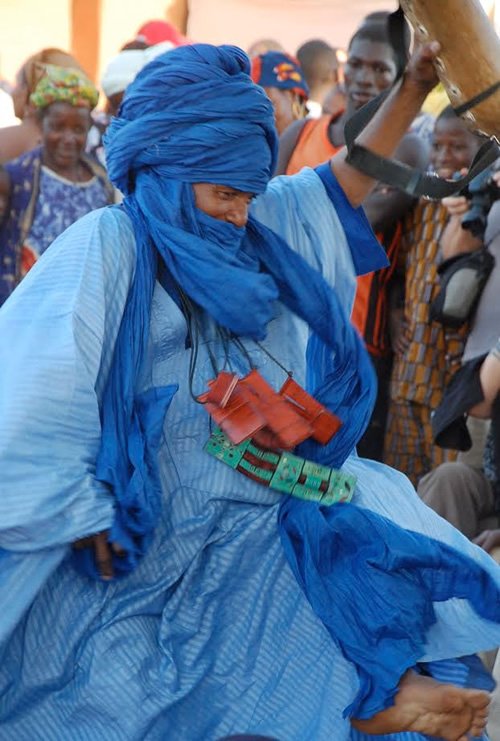
|
Traveling through a geographically and culturally diverse country like West Africa's Mali inevitably led to countless memorable experiences. There was, for instance, the fabulous trek through the Dogon Valley with its amazing cliff dwellings and extremely friendly people who still largely adhere to their animist beliefs. Or the enjoyable 3-day pinasse (small flat-bottomed wooden boat) trip over the Niger from Mopti to Timbuktu, followed by an adventurous camel ride through the Sahara desert in the North. Then there were the many bustling markets with their fragrant spices, huge calabashes, and intriguing kola nuts, as well as the eye-catching robes in every color of the rainbow, worn by the most beautiful women effortlessly carrying big and heavy loads on their heads. Not to be forgotten was the world's largest mud mosque in Djenne, with its unique carved doors and turrets spiked with wooden poles, and the animated port of Mopti filled with brightly colored wooden pirogues and pinasses originating from all corners of West Africa. Yet, the spectacular "Festival on The Niger," held on the river banks in the otherwise sleepy city of Segou, once the capital of the ancient Bambara kingdom, may well have been the biggest surprise of all.
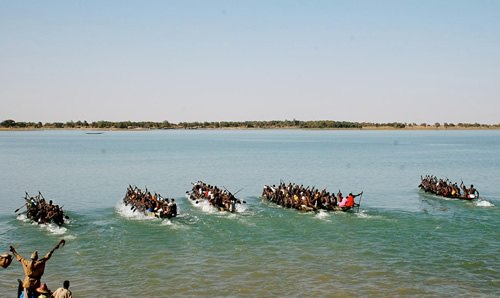
|
Since 2005, many talented West African artists have joined the yearly festival to show off their great talents and traditional heritage. This year's fascinating mix of peoples and cultures included Bozo and Bamana troups from the Markala region with masks and puppets, Tinde Tuaregs with music and dance, troups from the Dogon Valley with stilt dancers, antelope-horn-playing Burus of Ballan, and story tellers such as the well-known Mohamed Lamine Konate from Burkina Faso, who, accompanied by musicians, brought West Africa's past alive again under one of the region's legendary balanzan trees. Moreover, there were modern and traditional art exhibitions (photographs, paintings, woodwork, sculpture, and jewelry), pottery and bogolan (mud cloth textiles) workshops, an international forum on "Local Knowledge and Globalisation," craft markets, and pirogue races among teams of various villages along the Niger River. And to top it all off, an impressive line-up of famous Malian and other West African singers and musicians such as Vieux Farka, Mamar Kasse, Mamadou Diabate, Oumou Sangare, and Babani Kone were all featured in giant night concerts on the Niger waterfront.
At the Quai des Arts, where most of the festival activities took place, we watched members of the agriculturalist Bamana tribe, one of the largest ethnic groups in Mali, recreate impressive masquerades usually displayed during ceremonies such as the arrival of the rains in June, the end of harvest in the fall, circumcisions, or weddings. Life-size puppets and large mythical animals, the so-called sogow, were manipulated by people hidden inside these impressive, hand-made creations, and accompanied by musicians, drummers, singers, masked dancers, and a guide shaking a hand-bell and whispering instructions to those who could not see from inside the sogows. Sometimes, people from the audience, totally absorbed by the spectacle, would move in trance behind the sogows and masked dancers.
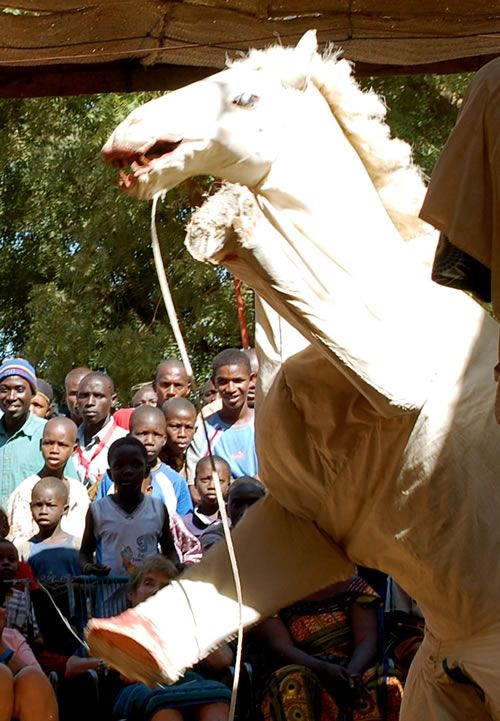
|
Whereas the Bamanas mainly appeared with bush animals such as antelopes, buffaloes, horses, or birds, the Bozo tribe members — fishermen who live in huts along the shores of the Niger — used aquatic sogows: various types of fish, a hippo, a crocodile, and even a luck-bringing mermaid emerging from the Niger. The story goes that during a severe drought in the past, some Bozo fishermen captured a mermaid and held her hostage until she finally unleashed an enormous deluge that caused the floods they had hoped for.
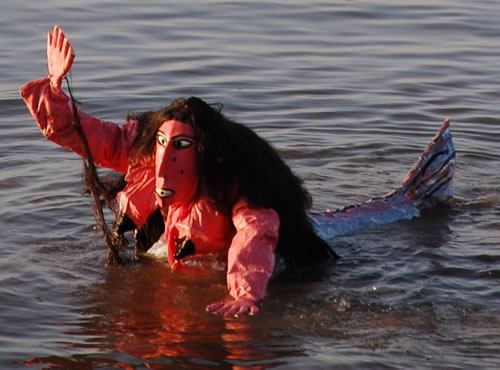
|
As pure spectacle, the performances of the masked Dogon dancers were hard to beat. We watched an amazingly colorful parade of male dancers, wearing a variety of ornate carved and painted ceremonial masks and costumes, as well as bristling raffia skirts, ankle, and wrist bands. Accompanied by drummers, they recreated authentic funeral ceremonies and anniversaries commemorating the dead. Some dancers were wearing masks up to at least 10 feet high, representing animals, spirits, women, or mythical heroes. Others had Mohawk-like masks that were adorned with little white shells and covered their whole head. Particularly jaw-dropping were the performances of two dancers on 12 feet high vertigo inducing stilts, lashed to their legs. With remarkable energy and agility the duo executed the most difficult steps as if they were dancing on a ballroom floor! The stilts serve as a reminder of the tingetange, long-legged river birds found along the rivers in times that the animist Dogons were still living among the Mande tribes, before moving to their current territory, the massive Bandiagara Escarpment, in order to protect and preserve their traditional customs (ancestor worship and cosmology among others) in the face of Muslim and Christian invasion.
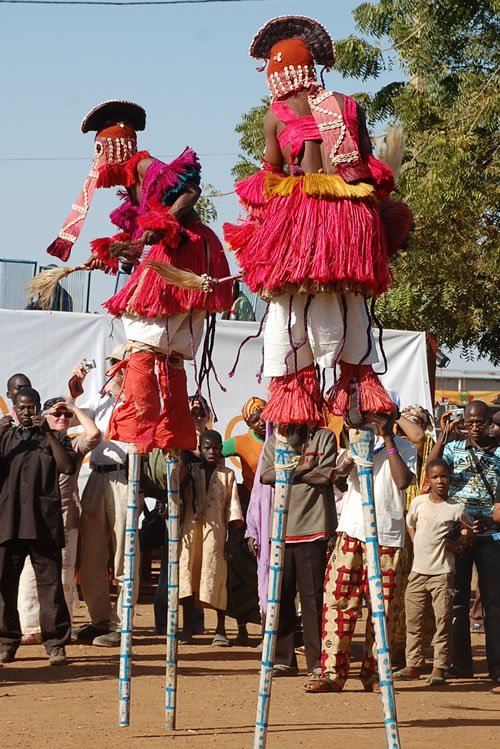
|
In the hot and hazy afternoons, after resting and replenishing in the leafy garden of the nearby L'Auberge or at the terrace of Hotel Djoliba, the hypnotic music of the Tinde Touaregs would soon lure us back to the Quai des Arts. There, in a shady spot, men in colorful long flowing boubous and tagelmusts — turbans of more than 10 meters in length swathed around their heads (allegedly out of protection against desert sand and sun, but by some also considered as a means to ward off evil spirits, or to reflect maturity), were solo-dancing and jumping on the percussive beat of a traditional tinde. This type of tambour consists of a wooden mortar normally used for grinding millet, covered for the occasion with goat skin, and is typically played on by a woman. On the off-beat, a female chorus and women's hand clapping would respond to the rhythmic sounds of the tinde. The women with their little kids were sitting on the ground, in a semi-circle around the dancing men, and unlike their male counterparts, they had only part of their head covered with loosely falling dark veils, adorned with exquisite silver jewelry (Tuareg women have a superstitious fear of gold). Tuareg dances and tinde rituals are usually performed during festivities such as camel races, weddings, and birth ceremonies.
The musical extravaganzas at night were, without any doubt, the main drawing card of the festival. On a custom-built floating pontoon on the Niger River, the cream of the crop of the West African music world entertained and incited an extremely enthusiastic and receptive audience, lined along the riverbank each night.
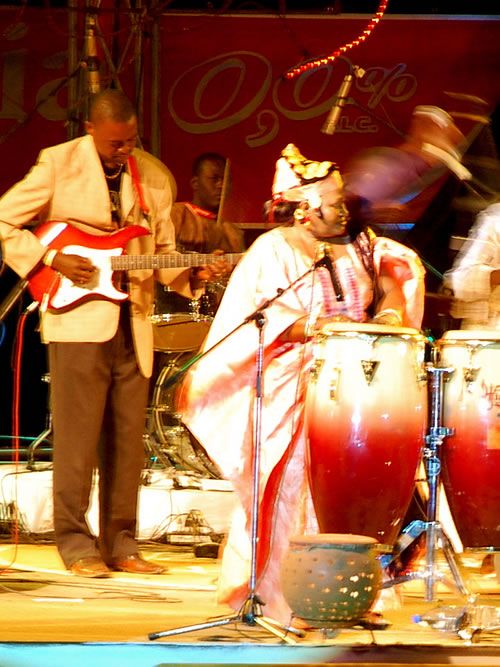
|
Malian celebrities such as Haira Harby, hailing from the desert town of Agouni north of Timbuctu and referred to as "the nightingale of the North," really got the crowd moving with her beautiful voice and fantastic beats, singing in Arabic, Sonrai, and Tamashek about marriage, love, peace, and the lives of her people. And when Vieux Farka, the son of legendary guitarist Ali Farka Toure, and Oumou Sangare, "the songbird of Wassalou" and outspoken champion of women's rights came on stage, the crowd began roaring and simply could no longer remain seated. It was during these musical manifestations, that the confluence of past and present was most palpable, as the oral tradition of griots and the use of ancient instruments like the balafon and the kora — still the musical mainstay for the vast majority of West Africans — blended happily with rock and roll, reggae, jazz, blues, and even salsa.
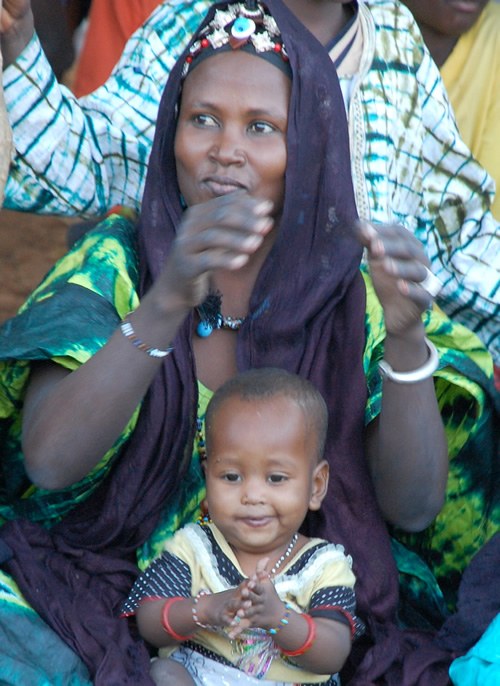
|
2024 update: The Festival on the Niger normally takes place yearly, but has been suspended since 2015 due to political issues in Mali that have made exiles of many musicians. In former times, the festivals and many great musicians played abroad at various venues worldwide, and were always worth attending.
We look forward to their return in the near future.
Lies Ouwerkerk is originally from Amsterdam, The Netherlands, and currently lives in Montreal, Canada. Previously a columnist for The Sherbrooke Record, she is presently a freelance writer and photographer for various travel magazines.
|
